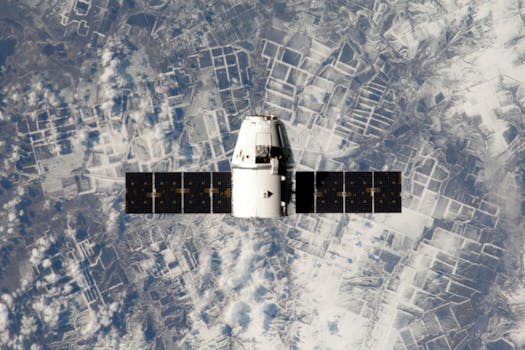
The Future is Now: Exploring the Cutting-Edge Innovations in Satellite Telecommunications
Satellite telecommunications is an area of technology that has been rapidly evolving in recent years, with innovations that are transforming the way we communicate globally. The future is now, and it’s exciting to explore the cutting-edge developments that are shaping the industry. Satellite telecommunications, The future is now, and it’s exciting to explore the cutting-edge developments that are shaping the industry. From high-throughput satellites to satellite constellations, these advancements are enabling faster, more reliable, and more widespread communication services.
One of the key drivers of innovation in satellite telecommunications is the growing demand for high-speed internet access. With the increasing use of mobile devices, social media, and online services, the need for fast and reliable internet connectivity has never been greater. Satellite telecommunications is playing a vital role in meeting this demand, particularly in areas where traditional fiber-optic or cable-based internet infrastructure is lacking. High-throughput satellites, such as those launched by companies like ViaSat and Hughes Network Systems, are capable of delivering speeds of up to 100 Mbps, making them an attractive option for consumers and businesses alike.
Another significant development in satellite telecommunications is the emergence of satellite constellations. These constellations, which consist of hundreds or even thousands of small satellites, are designed to provide global coverage and enable a wide range of applications, including internet access, navigation, and earth observation. Companies like SpaceX, OneWeb, and Amazon’s Kuiper Systems are leading the charge in this area, with plans to launch thousands of satellites in the coming years. Satellite constellations have the potential to revolutionize the way we communicate, enabling new services and applications that were previously unimaginable.
The Benefits of Satellite Telecommunications
Satellite telecommunications offers a number of benefits, including global coverage, reliability, and flexibility. Unlike traditional fiber-optic or cable-based internet infrastructure, which can be limited by geographical constraints, satellite telecommunications can reach even the most remote areas of the world. This makes it an ideal solution for areas where traditional infrastructure is lacking or unreliable. Satellite telecommunications is also highly reliable, with satellites operating in the harsh environment of space, where they are less susceptible to natural disasters or human error.
Satellite telecommunications is also highly flexible, with the ability to easily scale up or down to meet changing demand. This makes it an attractive option for businesses and organizations with fluctuating bandwidth requirements. Additionally, satellite telecommunications can be used to provide a wide range of services, including internet access, voice communications, and data transfer. With the development of new technologies, such as satellite-based 5G networks, the potential applications of satellite telecommunications are expanding rapidly.
The Challenges Facing Satellite Telecommunications
Despite the many benefits of satellite telecommunications, there are also several challenges facing the industry. One of the main challenges is the high cost of launching and operating satellites. Launching a satellite into space is a complex and expensive process, requiring significant investment in infrastructure and technology. Additionally, operating a satellite requires a high degree of technical expertise and significant resources. The cost of satellite telecommunications is also relatively high, particularly for consumers, which can limit adoption and accessibility.
Another challenge facing the satellite telecommunications industry is the issue of congestion in the radio frequency spectrum. With the growing demand for satellite services, the radio frequency spectrum is becoming increasingly congested, leading to interference and reduced performance. This is a significant challenge, as it can impact the reliability and quality of satellite telecommunications services. To address this challenge, the industry is exploring new technologies, such as advanced antenna systems and signal processing techniques, to improve spectrum efficiency and reduce congestion.
The Future of Satellite Telecommunications
The future of satellite telecommunications is exciting and rapidly evolving. With the development of new technologies, such as satellite-based 5G networks and quantum communications, the potential applications of satellite telecommunications are expanding rapidly. The use of artificial intelligence and machine learning is also becoming increasingly important in the industry, enabling the optimization of satellite operations and the improvement of service quality. As the demand for satellite telecommunications continues to grow, it’s likely that we’ll see significant investment in new infrastructure and technology, driving innovation and advancement in the industry.
In conclusion, satellite telecommunications is an area of technology that is rapidly evolving, with innovations that are transforming the way we communicate globally. From high-throughput satellites to satellite constellations, these advancements are enabling faster, more reliable, and more widespread communication services. While there are challenges facing the industry, the benefits of satellite telecommunications, including global coverage, reliability, and flexibility, make it an attractive option for consumers and businesses alike. As the industry continues to evolve, it’s exciting to think about the potential applications and services that will be enabled by these cutting-edge technologies.




